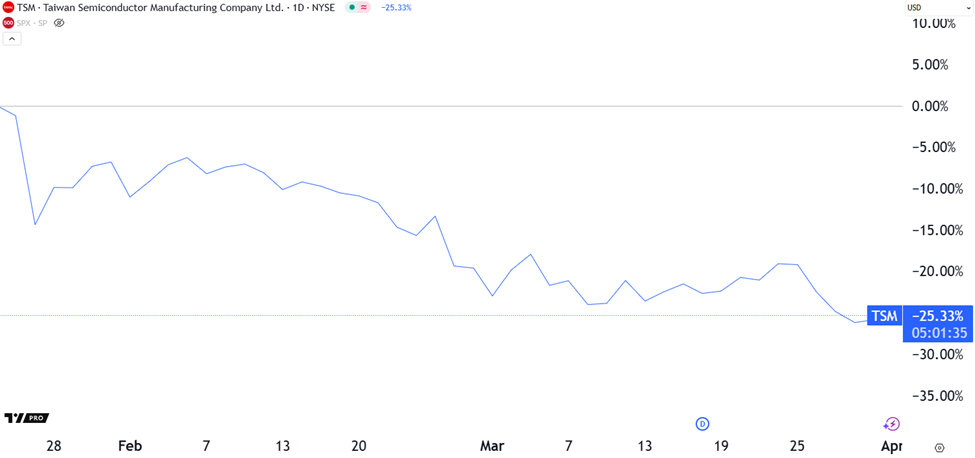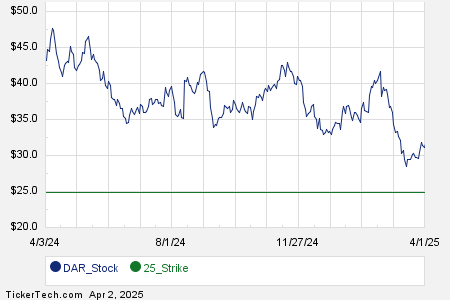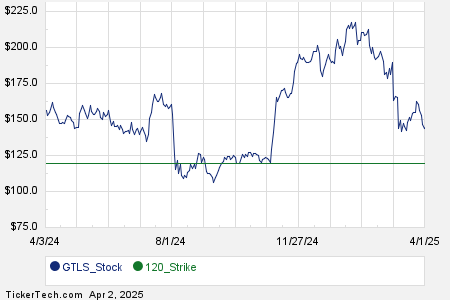Analyzing Trump’s Tariff Strategy: Impacts and Market Reactions
The financial media often portrays President Trump’s tariffs as disastrous for the economy, claiming he is intent on causing ruin.
However, this perspective is misleading.
Renowned investor Louis Navellier challenges this narrative.
Today, we will clarify the reality of Trump’s trade policies and approach the upcoming “Liberation Day.”
If the aim is not destruction, what drives Trump’s tariff agenda?
According to Louis:
This is fundamentally about leverage.
Trump’s tariff strategy encompasses two main objectives:
- Level the playing field – “What they charge us, we charge them.”
- Encourage onshoring to sidestep tariffs altogether.
Both strategies are designed to fortify the U.S. economy, and progress is already evident.
Tariffs in Action: Vietnam and the Auto Industry
One clear example of tariffs making an impact is seen in Vietnam and its automotive sector.
Currently, Vietnam ranks as the third-largest U.S. trade surplus partner after China and Mexico. Louis emphasizes that the tariffs are working as intended:
[Vietnam] has already responded positively.
It recently announced a reduction of tariffs on specific U.S. products, including liquefied natural gas and vehicles. This is a clear indication that nations are opting for negotiation over retaliation.
This move aligns with the goal of reducing tariffs; next, consider the impact on the automotive industry, which underscores the objective of onshoring.
Louis explains:
The EU is focused on achieving net zero, aiming to transition to all-electric cars by 2035.
However, manufacturers in Germany are currently struggling to profit from electric vehicle sales. Most earnings are still tied to traditional engine vehicles.
In contrast, Trump is extending an invitation to relocate to America. He has promised work visas for foreign employees and emphasized that electricity costs are significantly lower in the U.S. Incentives are also being offered by states to attract these automakers, many of whom already have operations in the country.
Thus, the question arises: why not move? This is the evolving landscape we are witnessing.
It’s important to note that Trump’s tariff approach extends well beyond automobiles.
Louis highlights that announcements regarding $1.2 trillion in technology onshoring have already emerged. If the pharmaceutical and automotive sectors follow this lead, he believes there could be several trillion dollars in new domestic investment.
Investor Strategy: Staying Calm in Volatile Markets
In challenging market conditions, investors often remember sage advice, such as Warren Buffett’s famous quote: “be greedy only when others are fearful.”
Yet, faced with portfolio declines of 5%, 8%, or even 14%, the emotional response can overshadow rational thinking.
In such scenarios, it’s wise to heed Louis’ counsel and refocus our attention from portfolio values to earnings.
He points out:
Markets can be irrational. Recently, Wall Street has overlooked significant advancements in AI.
For example, on March 10, Taiwan Semiconductor Manufacturing Co. Ltd. (TSM) reported a remarkable 43.1% increase in February revenues, totaling 260 billion Taiwan dollars.
This serves as a strong forward indicator for chip design firms like Arm Holdings plc (ARM) and NVIDIA Corporation (NVDA).
Looking specifically at TSM, since that announcement, the stock has decreased by 2%. This follows a substantial overall decline of 25% since January.
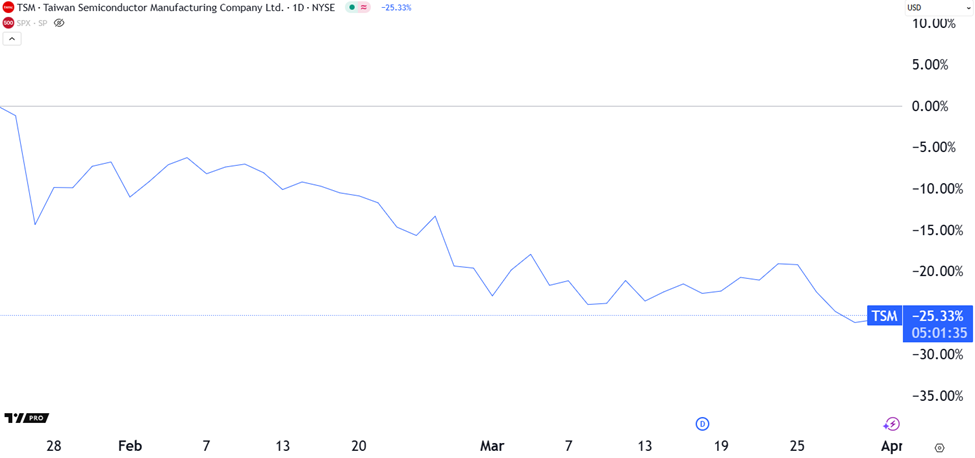
Source: TradingView
This decline may represent an attractive long-term buying opportunity.
Regarding NVIDIA, dedicated readers of the Digest know this is among Louis’ top selections.
He recommended it to his Growth Investor subscribers in 2019, who are currently realizing exceptional gains of 2,436% as of Tuesday morning.
Despite strong earnings and revenue performance in recent quarters, NVIDIA has seen a 27% drop since early January.
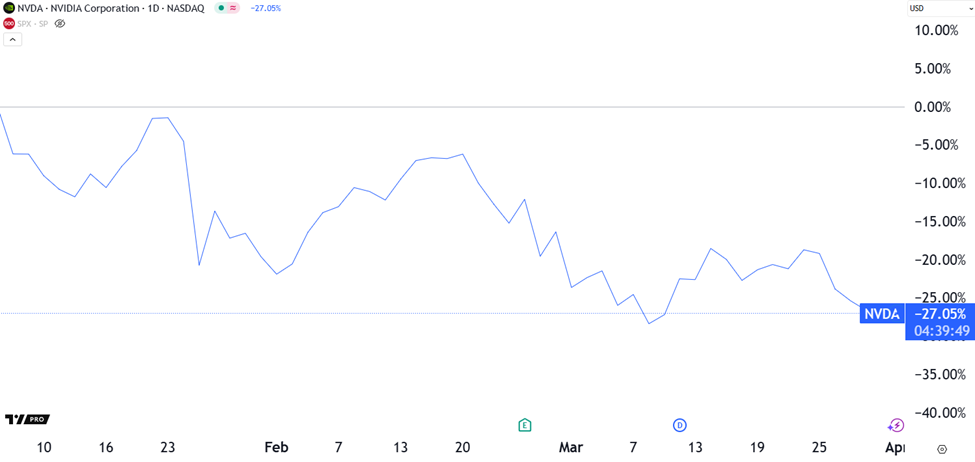
Source: TradingView
Louis has previously labeled NVIDIA his “Stock of the decade.” Could a 27% decline represent a promising buying opportunity?
Overall, Louis’ analysis suggests:
Despite robust AI earnings growth, investors have predominantly focused on the setbacks—especially the tariffs. The media exacerbates this situation, treating every minor setback in trade discussions as a significant crisis.
This narrative has pushed many high-quality AI stocks into correction territory.
Market Analysis: Targeted Buying in an Oversold Stock Environment
We’re currently observing a Stock market that is significantly oversold, with leading companies like NVIDIA available at attractive discounts.
Stock markets often operate under emotional impulses rather than rational calculations. The current market sentiment appears quite manic.
Cautious Investment Strategies Are Essential in the Current Market
This morning, I participated in a call with analysts from InvestorPlace and our corporate affiliate, TradeSmith. The consensus? This market requires careful stock picking.
While many stocks may be overhyped and inflated in value, astute investors can find great buying opportunities if they know where to look. Louis is actively searching and purchasing today.
Before we delve into specific investment options, let’s address the risks associated with a broad “buy the dip” mentality.
We face the possibility that the prevailing bearish sentiment may eventually translate into declining earnings.
In recent Digests, we discussed the dual influences on stock prices—earnings and sentiment.
Short-term price movements are heavily driven by sentiment, but in the long run, earnings will determine the outcome.
Currently, although earnings forecasts remain positive, bearish sentiment is pressuring stock prices downward.
As trade wars and other market factors primarily impact sentiment, we anticipate that this negative sentiment will eventually shift to a bullish outlook. This change could lead to a significant rise in stock prices as earnings take center stage again.
Luke Lango, our hypergrowth and technology expert, emphasized this in yesterday’s Digest:
If trade tensions do not escalate… and the economy remains stable… earnings estimates will continue to rise, rendering the current valuation discounts nonsensical…
Consequently, AI stocks are poised for a robust rebound.
However, if trade disputes not only perpetuate bearish sentiment but also lead to declining earnings, Wall Street would need to reassess stock prices across the board.
This reassessment would involve incorporating current lower sentiment multiples and adjusting for new, reduced earnings per share estimates.
The ramifications could be severe for the equity markets.
Goldman Sachs provided insight over the weekend with a research note projecting that, in a worst-case recession scenario, stock prices could plummet by approximately 50%.
Navigating the Current Market Landscape: A Binary Choice
At this juncture, we find ourselves facing a critical choice.
If signs indicate a shift towards bullish sentiment, that could signal a buying opportunity for strong stocks in this “Stock picker’s market.”
Conversely, if there is evidence suggesting weakening earnings, it would be prudent to exercise caution.
Notably, Goldman Sachs recently downgraded their expectations for the S&P for the year, with a significant factor being earnings.
Chief U.S. Equity Strategist David Kostin noted:
These estimates reflect revisions downward for both earnings growth and valuations, considering an uncertain economic environment with heightened recession risks.
Goldman has adjusted its 2025 target for the S&P from 6,200 to 5,700.
While this target still exceeds the current S&P price by just over 1%, it represents a 4% decrease from the beginning of the year.
This subdued outlook reinforces the importance of investing in fundamentally strong stocks. Companies with strong fundamentals tend to perform better during market downturns and rebound more swiftly in recovery phases. As Louis often articulates:
Fundamentally robust stocks bounce back like fresh tennis balls.
With volatility persisting, the question arises: how should you approach investing?
The solution is straightforward: invest in fundamentally superior stocks that are likely to bounce back!
These stocks maintain stability during turbulent periods and surge when market conditions improve.
Examples of Strong Stocks Amid Market Turbulence
Looking back to last week, we’ve been profiling insights from a roundtable discussion on AI led by Louis and our other experts, Eric Fry and Luke Lango.
They provided a valuable framework for current investment decisions, showcasing a select group of elite AI stocks poised to become future market leaders, with “fundamental strength” being a pivotal characteristic.
Here’s an overview from Louis related to their top AI investments:
Among the 11 companies in the AI Revolution Portfolio that released earnings last month, nine surpassed expectations while one met forecasts.
As a collective, these firms achieved 18% revenue growth and 24% earnings growth, with projections for a further 77% profit increase by 2026.
In contrast, the S&P 500 reported earnings growth of 7.1% and revenue growth of 4.2% in the first quarter.
These impressive figures highlight the resilience of strong investment themes, which tend to withstand market fluctuations.
If you missed last week’s presentation, you can catch a free replay right here. This replay will be available only until tomorrow.
Concluding Thoughts
Attention turns to the upcoming “Liberation Day” tomorrow.
Louie and Luke believe that while immediate market pressures may persist, the tariff clarification process is on the horizon, which could lead us back to more favorable market conditions.
In Louis’s words:
Once the April 2 “Liberation Day” deadline passes and clarity is restored, much of the angst surrounding the market should dissipate.
Increased clarity, optimism, strong corporate earnings, combined with potential reductions in interest rates, could provide the momentum needed for stock prices to advance.
We’ll provide updates tomorrow following the developments on Liberation Day.
Wishing you a pleasant evening,
Jeff Remsburg
